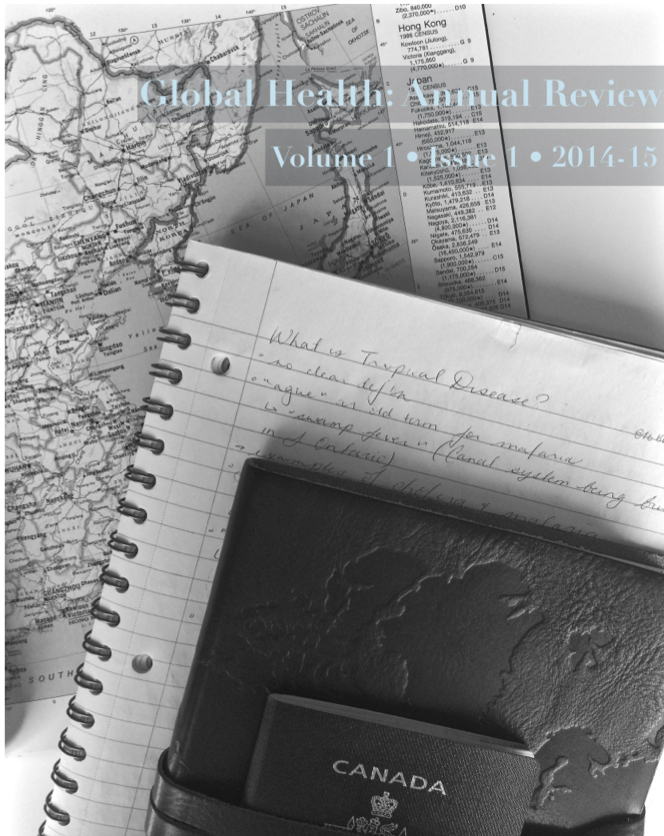Investigating the Relationship Between Climate Change and Tropical Parasitic Disease
Résumé
Background: The International Panel on Climate Change (IPCC) has concluded that Earth’s climate has changed considerably in the last century, in part due to human-related activity (1). Based on the IPCC 2007 Report, the average surface temperature increased approximately 0.74°C ± 0.18 °C over the twentieth century (1). The increased temperatures are linked to changes in other parameters of Earth’s climate system, such as the rising sea-level and increased yearly number of heavy rainfalls, extreme flooding, and droughts (1,2). Such changes in the Earth’s climate system are predicted to continue over the twenty-first century (1,2). Given that a population’s survival is largely dependent on the Earth’s climate, increasing attention has been placed on whether climate change has affected parasitic disease patterns. In principle, climate can affect parasitic diseases with respect to changes in reproduction, development, and the population dynamics of the parasite and the parasite host (3). However, the effects of climate change on parasitic disease over the last century remain controversial. It is important to understand the relationship between climate change and parasitic disease in order for the development of appropriate and effective policies in disease prevention.
Objectives and Methodology: The objective of the current study was to investigate and review the relationship between climate change and various parasitic diseases, including malaria, Chagas disease, leishmaniasis, schistosomiasis, and lymphatic filariasis, considering the potential consequences for the human population as well. Thus, a literature review was performed using OVID as the main search engine to review the existing evidence.
Results: A total of 43 observational studies were analyzed (15 malaria, 7 Chagas disease, 11 leishmaniasis, 5 schistosomiasis, and 5 lymphatic filariasis). In reviewing the existing literature, it was observed that the vectors and parasites of the tropical parasite diseases are influenced by local temperatures, rainfall, and other climate indices. While malaria and leishmaniasis were predominantly positively associated with temperature increases (4, 5), Chagas disease was negatively associated with increased temperatures (6). The effects of temperature on Schistosomiasis and lymphatic filariasis were less consistent, with both positive and negative associations observed. The dominant hypothesis to account for the differing associations observed between parasites and temperature change is one of an optimal growth habitat for a given parasite (3). That is, while temperature positively influences vector and parasite survival, extreme temperatures can be detrimental to currently endemic regions (3). In examining precipitation patterns, with the exception of lymphatic filariasis, for which a positive association was observed (7), the effects of precipitation were mixed for other parasitic diseases studied. The effects of precipitation on infectious disease appear to be very specific to the region, as increased rainfall can produce both positive and negative results for the vectors studied (3).
Conclusion: The current study demonstrates that climate change plays a fundamental role in the survival of vectors and parasites, and the transmission of infectious disease. The results suggest that climate change has altered the geographical distribution of infectious disease, particularly in regions previously unsuitable for vector and parasitic survival. Future studies should seek to define how much of the burden of infectious disease can be attributed to climate change.
Références
1. Parry ML, Intergovernmental Panel on Climate Change Working Group II. Climate change 2007: Impacts, adaptation and vulnerability: Contribution of working group II to the fourth assessment report of the intergovernmental panel on climate change. Cambridge, NY: Cambridge University Press; 2007.
2. Solomon S, Quin M, Manning Z, Chen M, Marquis KB, Averyt M. Climate change 2007: The physical science basis: Contribution of working group I to the fourth assessment report of the intergovernmental panel on climate change. Cambridge: Cambridge University Press; 2007.
3. Patz JA, Githeko AK, McCarty JP, Hussein S, Confalonieri U, & de Wet N. Climate change and infectious disease. In McMichael A. Campbell-Lendrum DH, Corvalan CF, Ebi KL, Githeko AK, Scheraga JD,… WoodwardA. (Eds.), Climate change and human health (pp. 103-133). Geneva; Switzerland: World Health Organization; 1996.
4. Bai L, Morton LC, & Liu Q. (2013). Climate change and mosquito-borne diseases in china: A review. Globalization and Health 2013; 9(1):10.
5. De Souza RAF, Andreoli RV, Kayano MT, & Carvalho AL. American
cutaneous leishmaniasis cases in the metropolitan region of manaus, brazil: Association with climate variables over time. Geospatial Health 2015; 10(314): 40-47.
6. Bustamante DM, Monroy MC, Rodas AG, Juarez JA, & Malone, JB. Environmental determinants of the distribution of chagas disease vectors in south-eastern guatemala. Geospatial Health 2007; 2:199-211.
7. Stanton MC, Molyneux DH, Kyelem D, Bougma RW, Koudou BG, & Kelly-Hope, LA. Baseline drivers of lymphatic filariasis in burkina faso. Geospatial Health 2013; 8(1):159-173.


